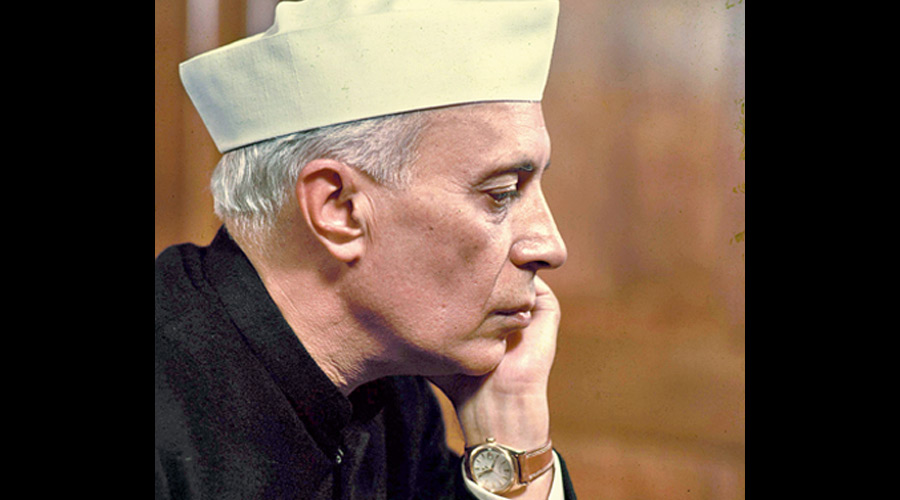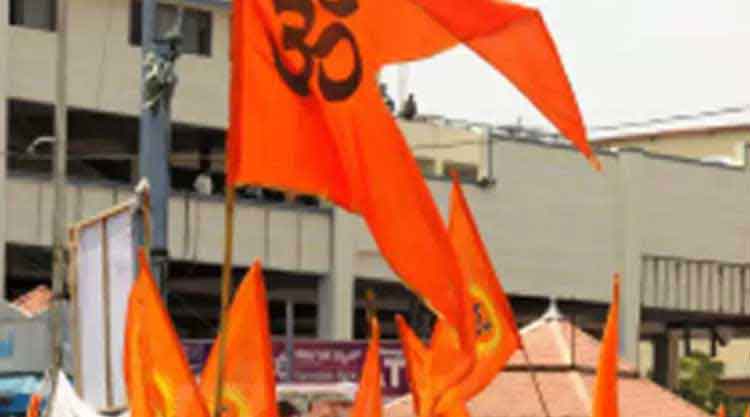Schoolchildren should learn about the anti-Sikh riots of 1984 but not be told a word about the Gujarat riots of 2002, the National Council of Educational Research and Training (NCERT) has decided.
They must also not hear of Jawaharlal Nehru’s vision of a modern India, any criticism of caste inequality, or the road to the making of India’s Constitution. The NCERT, which is responsible for preparing textbooks used in CBSE schools across the country and by many state boards, has “rationalised” content in its textbooks to “reduce the load” on students in view of the pandemic.
In the process, material that the BJP-RSS would find unpalatable has got deleted. Prof Anita Rampal, chairperson of textbook development committee of NCERT at Primary Stage and former Dean, Faculty of Education, at Delhi University, cited the case of deliberate selective removal of content on Gujarat riots while retaining the material on anti-Sikh riots in Class-XII political science textbook. The chapter “Structural Change” in a Class XII sociology textbook Social Change and Development in India had one paragraph on the country’s first Prime Minister: “A modern and prosperous India as visualised by Jawaharlal Nehru was to be built on an edifice of giant steel plants or gigantic dams and power stations.” This has now been deleted.
Rampal questioned the rationale for dropping content on the Gujarat riots while keeping that on the anti-Sikh riots.
“It was very significant that these textbooks, developed between 2006-8 while the Congress was in power, could discuss the Delhi riots against the Sikhs with academic honesty, and without deference to the ruling political party. Indeed the government had not attempted to censor or alter textbooks that questioned or critiqued it's actions and policies. Critical pedagogy is premised on social justice for democracy, where students and teachers are encouraged to examine various facts and records, with an open mind. There is clearly no rationale for the present motivated deletions being termed as 'rationalisation'. This is contrary to a sound and scientific approach of teaching and learning, with serious implications for the development of our students”, explains Rampal.
The chapter “Cultural Change” in the same book no longer has the views of a Dalit student denouncing the Hindu religion. The deleted paragraph read: “Yet another view increasingly voiced by Dalits was a complete rejection of Hindu fold. For instance, using the tool of modern education, Muktabai, a 13-year-old student in Phule’s school writes in 1852: Let that religion/ Where only one person is privileged/ And the rest are deprived/ Perish from this earth/ And let it never enter our minds/ To be proud of such a religion….”
Another paragraph removed from the same chapter said: “Therefore to be able to look down on some groups, just as the ‘upper castes’ look down on the ‘lower castes’, is a mark of privilege. In society where such worldview exists, imagining an equal society becomes difficult.” Eight pages in a row have been axed from the chapter “The Story of Indian Democracy” in the same book. These detailed the chronology of Constitution-making and offered snippets from the Constituent Assembly debate. Among the deleted sentences is this one: “As far back as in 1928, Motilal Nehru and eight other Congress leaders drafted a constitution for India.”
NCERT director Dinesh Prasad Saklani said content had been deleted “professionally” by subject experts. “NCERT constituted various expert committees including professors from universities across the country, school teachers and NCERT faculty to examine the content of all the books and find out how the content load may be reduced. All the points raised by you and all others which are being discussed have been amply recommended by the expert committees to be removed. This is done uniformly without any selective approach,” Saklani wrote back, when asked by this newspaper about the deletions. It is unclear what prompted the “expert committees” to recommend that all content on the Gujarat riots be deleted but that on the anti-Sikh riots be retained.
Content on both riots were included in the Class XII political science book Politics in India since Independence during a revision between 2006 and 2008, when the Congress-led UPA government was in power. The chapter “Regional Aspirations” that talked about the 1984 riots has been retained in full in the rationalised version. Under the heading “Cycle of violence” on Pages 159-160, the violence against Sikhs that followed the assassination of Prime Minister Indira Gandhi on October 31, 1984, has been described. “While the entire country was shocked by this development, in Delhi and in many parts of northern India violence broke out against the Sikh community. The violence against the Sikhs continued for almost a week. More than two thousand Sikhs were killed in the national capital, the area worst affected by this violence,” it says.
“What hurt the Sikhs most was that the government took a long time in restoring normalcy and that the perpetrators of this violence were not effectively punished.” The Congress was in power at the Centre when the 1984 riots broke out, with Rajiv Gandhi taking over as Prime Minister following his mother’s assassination. In 2006-2008, when the chapter on the riots was included, the Congress was again in power at the Centre. Excerpts from the Justice Nanavati Commission of Inquiry Report of 2005 were part of the textbook: “There is also evidence to show that on 31-10-84 either meetings were held or persons who could organise attacks were contacted and were given instructions to kill Sikhs and loot their houses and shops. The attacks were made in a systematic manner and without much fear of the police, almost suggesting that they were assured that they would not be harmed while committing these acts or even after”. These have been retained.
However, the rationalised textbook has dropped altogether the reference to the Gujarat riots, which was covered in Pages 187-189 in the same book, in the chapter “Recent Developments in Indian Politics”. The earlier version of the book had said: “In February-March 2002, large-scale violence took place in Gujarat. The immediate provocation for this violence was an incident that took place at a station called Godhra. A bogey of a train that was returning from Ayodhya and was full of Karsevaks was set on fire. Fifty-seven people died in the fire.
“Suspecting the hands of Muslims in setting fire to the bogey, large-scale violence against Muslims began in many parts of Gujarat from the next day. This violence continued for almost a whole month. Nearly 1100 persons, mostly Muslims, were killed in this violence. “The National Human Rights Commission criticised the Gujarat government’s role in failing to control violence, provide relief to the victims and persecute the perpetrators of this violence. The Election Commission of India ordered the Assembly elections to be postponed as in the case of anti-Sikh riots of 1984.
“The Gujarat riots show that the governmental machinery also becomes susceptible to sectarian passions. Instances like in Gujarat alert us to the dangers involved in using religious sentiments for political purposes. This poses a threat to democratic politics”. Narendra Modi, who is now the Prime Minister, was the chief minister of Gujarat during the 2002 riots.
Prof C.B. Sharma, a faculty member at Ignou, said that curriculum design and textbook preparations had been marked by political influence for the past 50 years. It is because the NCERT functions under the chairmanship of the incumbent education minister.
“In the 1970s, a group of university professors started writing school textbooks with the approval of then minister. Several groups have complained and I also feel that the history books till 2000 presented a skewed version as they were loaded with content on those who came from outside, conquered us and ruled us while giving very less about India’s ancient glory,” Sharma said. He said the National Curriculum Framework was prepared in 2000 under the Atal Bihari Vajpayee government and was changed in 2005 after the change in government for political reasons. “The textbooks were discarded within five years. The Manmohan Singh government permitted the Left parties to push their ideological agenda in textbooks,” Sharma said.
N. Sukumar, faculty of political science at Delhi University, criticised the removal of content on caste-based inequality. “Caste is a social reality. Social inequality is being promoted everywhere. Caste will continue to attract the attention of students and researchers,” Sukumar said. “One can see a clear methodological removal of certain perspectives from the textbooks. Whether caste, or any other form of inequality, ideological positions of the Rashtriya Swayamsevak Sangh, Congress and the Left and issues of minorities are all different perspectives. Students need to critically analyse different perspectives to be able to understand them,” Sukumar said.












